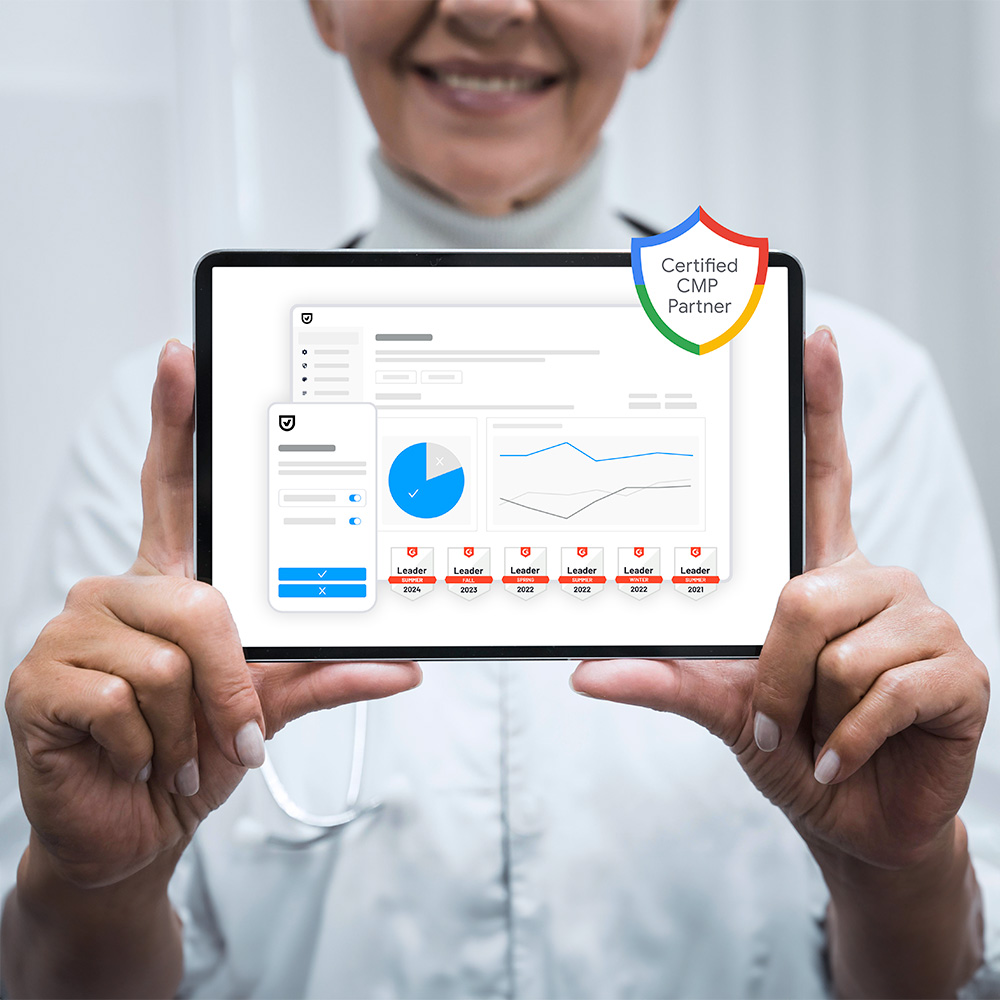Microsoft Universal Event Tracking (UET) with Consent Mode helps businesses responsibly manage data while optimizing digital advertising efforts. UET is a tracking tool from Microsoft Advertising that collects user behavior data to help businesses measure conversions, optimize ad performance, and build remarketing strategies.
Consent Mode works alongside UET. It’s a feature that adjusts how data is collected based on user consent preferences. This functionality is increasingly important as businesses address global privacy regulations like the GDPR and CCPA.
For companies using Microsoft Ads, understanding and implementing these tools helps them prioritize user privacy, build trust, and achieve better marketing outcomes while respecting data privacy standards.
What is Microsoft UET Consent Mode?
Microsoft UET Consent Mode is a feature designed to help businesses respect user privacy while maintaining effective advertising strategies. It works alongside Microsoft Universal Event Tracking (UET) by dynamically adjusting how data is collected based on user consent.
When visitors interact with your website, Consent Mode determines whether tracking is activated or limited, depending on their preferences. For instance, if a user opts out of tracking, Consent Mode restricts data collection. This function aligns the tracking process with privacy preferences and applicable regulations.
Consent Mode supports businesses as they balance privacy expectations with effective campaign management. It also helps businesses align their data practices with Microsoft’s advertising policies and regional privacy laws to create a more transparent and user-focused approach to data management.
Why businesses need Microsoft UET Consent Mode
The role of UET in advertising
Microsoft Universal Event Tracking (UET) offers businesses the tools they need to optimize advertising strategies. With a simple tag integrated into a business’s website, UET helps advertisers monitor essential user actions like purchases, form submissions, and page views. This data is invaluable for building remarketing audiences, tracking conversions, and making data-backed decisions that improve ad performance.
However, effectively collecting and utilizing this data requires alignment with user consent preferences. Without proper consent, businesses risk operating outside privacy regulations, and could face penalties or restrictions. By integrating UET with Consent Mode, businesses can respect user choices while continuing to access the insights needed to run impactful advertising campaigns.
Challenges in advertising compliance
In today’s digital age, businesses must carefully balance data-driven advertising with growing privacy expectations. Regulations like the General Data Protection Regulation (GDPR), the California Consumer Privacy Act (CCPA), and the California Privacy Rights Act (CPRA) have set clear rules about how user data can be collected, stored, and used. Non-compliance can lead to significant consequences, such as hefty fines, restricted access to ad platforms, or even account suspension.
Beyond financial and operational risks, non-compliance can damage a company’s reputation. When businesses fail to address privacy concerns, they risk losing customer trust—a resource that is difficult to rebuild. As users become more aware of how their data is used, businesses that fail to adopt transparent practices may struggle to retain their audience.
Enforcement of Microsoft UET Consent Mode
Microsoft Advertising is requiring that customers start to enforce explicitly obtaining and providing consent signals by May 5, 2025.
Providing consent signals enables Microsoft Ads customers to comply with the requirements of privacy laws like the GDPR, where violations can result in hefty fines and other penalties.
Obtaining explicit consent also demonstrates respect for users’ privacy and rights, building user trust. Consumers increasingly indicate concerns over access to and use of their data online.
Consent benefits advertising performance as part of your Privacy-Led Marketing strategy as well. Continue generating valuable insights into campaigns for effective targeting and conversion tracking.
Benefits of using Microsoft UET Consent Mode
By integrating Microsoft UET Consent Mode, companies can address user expectations, improve data accuracy, and create a more transparent relationship with their audience. Let’s take a closer look at the benefits of using Microsoft UET Consent Mode.
Supporting privacy regulations
Privacy laws such as the GDPR, CCPA, and the ePrivacy Directive require businesses to handle user data responsibly. Microsoft UET Consent Mode adjusts data collection practices based on user preferences, helping companies better align with these requirements. By respecting user choices, businesses can reduce the risks associated with non-compliance.
Accurate data collection
Data accuracy is a key component of any successful advertising strategy. With Consent Mode, businesses only collect insights from users who agree to data tracking. This focus helps prevent skewed data caused by collecting information from users who have not consented. These insights are therefore more reliable and actionable.
Optimized ad campaigns
Consent Mode enables businesses to continue leveraging tools like remarketing and conversion tracking while honoring user privacy preferences. This functionality helps advertisers maintain the effectiveness of their campaigns by focusing on audiences who have opted into tracking. As a result, companies can make data-driven decisions without compromising privacy.
Building trust through transparency
Demonstrating respect for user privacy goes beyond privacy compliance — it also fosters trust. Transparency about how data is collected and used enables businesses to strengthen their relationships with customers. A privacy-first approach can set companies apart in a competitive advertising environment by showing users that their choices and rights are valued.
Why use Usercentrics Web CMP with Microsoft UET Consent Mode
Usercentrics Web CMP provides businesses with a practical solution for integrating Microsoft UET with Consent Mode. By leveraging Usercentrics Web CMP’s unique features, companies can manage user consent effectively while maintaining a seamless advertising strategy.
Streamlined implementation
Usercentrics Web CMP simplifies the process of integrating Microsoft Consent Mode. With automated configuration, businesses can set up their systems quickly and focus on optimizing their campaigns without the complexities of manual implementation.
Seamless compatibility
As among the first consent management platforms to offer automated support for Microsoft Consent Mode, Usercentrics Web CMP is designed for smooth integration with Microsoft UET. This compatibility reduces technical challenges and supports reliable functionality.
Customizable consent banners
The CMP enables businesses to design consent banners that align with their branding, creating a consistent user experience. Clear, branded messaging helps communicate data collection practices effectively while maintaining professionalism.
Privacy-focused data management
Usercentrics Web CMP provides a centralized platform for managing user consent across different regions and regulations. Businesses can easily adapt to global privacy requirements and organize their data collection practices efficiently, all in one place.
How to set up Microsoft UET with Consent Mode using Usercentrics Web CMP
Usercentrics Web CMP simplifies the process of setting up Microsoft UET with Consent Mode. As the first platform to offer automated implementation of Microsoft Consent Mode, Usercentrics Web CMP enables companies to focus on their marketing efforts while managing user consent effectively.
To integrate Microsoft UET with Consent Mode using Usercentrics Web CMP, follow these steps:
For a detailed walkthrough, refer to the support article.
Adapting to Privacy-Led Marketing with Microsoft UET Consent Mode
Microsoft UET with Consent Mode, supported by Usercentrics Web CMP, provides businesses with a practical approach to balancing effective advertising with user privacy. With this solution, companies can streamline consent management, enhance their advertising strategies, and adapt to ever-changing privacy expectations.
Respecting user choices isn’t just about privacy compliance—it’s an opportunity to build trust and demonstrate a commitment to transparency. Businesses that embrace Privacy-Led Marketing position themselves as trustworthy partners in a competitive digital marketplace.
Adopting Privacy-Led Marketing does more than support long-term customer relationships. It also enables companies to responsibly leverage valuable insights to optimize their campaigns. Microsoft UET with Consent Mode and Usercentrics Web CMP together create a strong foundation for businesses to effectively navigate the intersection of privacy and performance.





